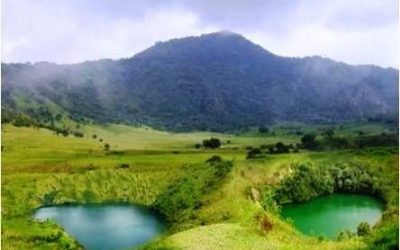To consolidate the conservation of great apes and other threatened species in Eastern Cameroon, the Environment and Rural Development Foundation (ERuDeF) through financial support from World Land Trust (WLT), UK, launched the Deng Deng-Belabo Conservation corridor project in 2020. This project is just a small fraction of the bigger corridor initiative between the Deng Deng National Park and Dja Biosphere Reserve. The main goal of this project is to preserve quality habitat of 7406 ha between the Deng Deng National Park and Belabo Council Forest for the migration of the western lowland gorillas and other threatened species.

The Deng Deng National Park and Dja Biosphere Reserve are two protected areas found in the East region of Cameroon. These two protected areas now occur as isolated block of forest due to increase human pressure that has caused the fragmentation. The increased human pressure has also caused a small population of the western lowland gorillas and the central chimps to be isolated in the Deng Deng National Park and another population of these species also isolating in the Dja Biosphere Reserve. These two isolated groups are under serious threat and could possibly get extinct in few years to come due to inbreeding.
To curb the occurrence of inbreeding and possible extinction of the species, ERuDeF is supporting the creation and management of an ecological corridor in the said area through the community forestry approach. Two community forests of sizes 5000 ha and 4,588 ha ha between the Deng Deng National Park and Belabo Council Forest are currently under creation.
Biological surveys (both fauna and flora) have been conducted in the two community forests and the surveys recorded 8 primate, 7 ungulate, 7 rodent, two reptile and one carnivore species in communityforest one and 7 primate, 7 ungulate, 7 rodent, two reptile and one carnivore species also recorded in community forest two. Some species of birds were also recorded including the threatened African Grey parrot. The surveys also recorded 145 plant species in 41 families in community forest one and 156 plant species in 41 families in community forest two.
Socioeconomic and household surveys were conducted and a total of five villages with a total population of 2244 people border Community Forest one, while five villages with a total number of 3920 people border Community Forest two.
Sensitization meetings were also organized where the key stakeholders including the local people were sensitized on the project and its importance to the communities. The two community forests were named as KEBO and ADEMKEPOL by the local people in an awareness meeting.
Two legal entities in the form of Common Initiative Groups (CIGs) have been put in place. The two community forests boundaries have been mapped out; a public notice have been signed informing the communities of the intension of creating the community forests which will be placed under the management of the management institutions. The Articles of association have also been drafted and approved by all relevant stakeholders awaiting legalization at the Ministry of Agriculture and Rural Development.
At the end of this project, about 5000 local people will be impacted while over 600 western lowland gorillas will be saved and protected as human pressure on their habitat must have reduced by 80%.



